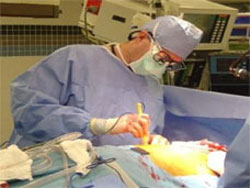What is the mesothelium?
Many of the internal organs of the body are protected by a membrane called the mesothelium. This membrane actually consists of two layers of cells. The inner layer surrounds the organs, and the second is a sac surrounding the inner layer. When organs within this membrane must move or expand or contract — such as the heart, lungs, bladder, and so on, they are able to do so because the mesothelium produces a lubricating fluid between the two layers.
What about the options available for treating cancer mesothelioma, This cancer is a rare cancer which has a very long time to appear in the human body, the symptoms of the disease take many years from 30 to 50 years. For this problem, the discovery of mesothelioma, cancer is very difficult.
The other problem with the discovery of mesothelioma, cancer is the similarity of signs of that disease to signs of other illness and diseases. The diagnosis of mesothelioma is difficult. SO, the diagnosis of this process takes a lot of transactions to be attained.
What are the options to treat mesothelioma cancer? There are three options for the primary treatment.
Unfortunately, individuals suffering from mesothelioma (a form of cancer caused by asbestos exposure) have a rather poor prognosis. There is currently no cure for mesothelioma, and once the disease is discovered, patients usually only have a short time to live. Without treatment, mesothelioma is fatal within four to eight months. New forms of treatment are always being developed and tested, however, and there is evidence that the healthier a patient is at the time of diagnosis, the longer the life expectancy of the patient.
There are cases where patients receiving treatment have lived for as long as five or even ten years, but this is very rare. Even under treatment, most people survive less than one year, and often only a few months after receiving their mesothelioma diagnosis. According to recent studies, around 10% of victims live at least three years after their diagnosis, and 5% reach five years.
The mesothelioma lawyer (s) at some firm (A mesothelioma law firm which is dedicated to finding a cure for mesothelioma and has donated over $10 million to cancer research) have been working with people diagnosed with mesothelioma and asbestos-related diseases and their families for nearly a decade.
DIAGNOSIS OF MESOTHELIOMA
A mesothelioma diagnosis starts with identification of the symptoms associated with the different forms of the disease. Then, a doctor will review medical history, paying special attention to circumstances where an individual may have been exposed to asbestos. Next, is a complete physical examination with x-rays and possibly a CT scan or MRI. Finally, a biopsy confirms a diagnosis. This can take the form of a fine-needle aspiration, thoracoscopy or laparoscopy. Afterwards, more tests are given to determine staging, or the level of disease severity on a scale of I-IV.
Stages of mesothelioma
I. localized, limited to one part of the body
II. spread to another nearby membrane or organ
III. spread to several other nearby membranes or organs, possibly lymph nodes
IV. advanced, metastasized cancer that spreads to parts of the body farther away from the original site
Other testing
Imaging tests include (explained in greater detail on the American Cancer Society):
- Chest x-rays
- CT (computed tomography) scans
- PET (positron emission tomography) scans
- MRI (magnetic resonance imaging) scans
- Blood tests
- Fluid tests and tissue samples
- Thoracentesis (chest cavity fluid)
- Paracentesis (abdominal fluid)
- Pericardiocentesis (heart sac fluid)
- Needle biopsies
- Thoracoscopy/laparoscopy/mediastinoscopy
- Surgical biopsy
- Bronchoscopic biopsy
- Testing lab samples
- Immunohistochemistry
- DNA microarray analysis
- Electron microscopy
- Pulmonary function tests (PFTs)
TREATMENT
Depending on a patient’s physical condition and stage of mesothelioma, the treatment prescribed may be either curative or palliative. Curative treatments are designed to completely eradicate the disease, and are usually given to patients with Stage I or Stage II mesothelioma. Palliative treatments, on the other hand, are designed to relieve symptoms of the disease and are usually administered when mesothelioma tumors are too large to remove or have already spread throughout the body.

Surgery
The goal of mesothelioma surgery is usually curative. For patients in relatively good health whose mesothelioma is contained to one specific area, surgery is many times the most effective treatment option.
Surgeries designed to treat pleural mesothelioma include pleurectomy and extrapleural pneumonectomy. Pleurectomy, which is usually used to treat patients with localized mesothelioma, removes the pleura where the tumor is located. Extrapleural pneumonectomy is much more extensive and removes the pleura, the diaphragm, pericardium and one whole lung.

Chemotherapy
Chemotherapy treatments attack mesothelioma cells with anti-cancer drugs. While chemotherapy is not considered a completely curative treatment, it can be effective at holding mesothelioma in check and shrinking tumors. If a patient undergoes surgery for mesothelioma, chemotherapy is often used as a supplemental treatment. For those physically unable to handle surgery, however, chemotherapy can be used as an alternative treatment.
No two people react the same to chemotherapy treatments, which is why doctors often experiment with a number of different drugs. Two of the most common drugs prescribed for mesothelioma are pemetrexed (Alimta) and cisplatin.

Radiation Therapy
Radiation works best on single, large tumors, because it can bombard these tumors with a strong concentration of high-energy x-rays or particles. Since most mesothelioma cases consist of smaller tumors spread across a large area, radiation is often relatively ineffective.
Radiation is many times used as a palliative treatment, relieving mesothelioma symptoms like shortness of breath, pain and bleeding. It can also be used as a supplement to surgery or an alternative for those too weak to handle surgery and chemotherapy.
Clinical Trials
Trial therapies focus on the study of promising new treatments for a particular disease. These trials are constantly in need of patients who are willing to try these experimental treatments before they are approved by the FDA. Patients should speak to their doctors about current clinical trials available to them and if they might qualify to be a part of a particular study. Those opting to participate in a clinical trial should carefully weigh the pros and cons before agreeing to participate.
Alternative Therapies























